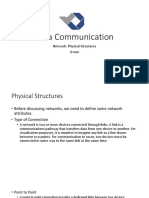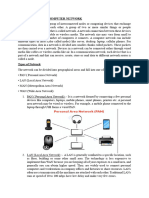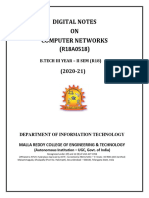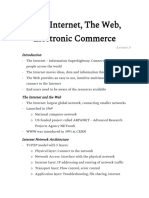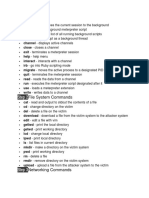0% found this document useful (0 votes)
23 views4 pagesNETWORKING
A computer network consists of interconnected computers that share data and resources, utilizing nodes and links governed by communication protocols. The document outlines the goals of networking, types of networks (LAN, PAN, MAN, WAN), key network devices (like routers and switches), and various network topologies (bus, ring, star, mesh, tree), each with its own advantages and disadvantages. Understanding these concepts is essential for effective network design and management.
Uploaded by
Himani ThakurCopyright
© © All Rights Reserved
We take content rights seriously. If you suspect this is your content, claim it here.
Available Formats
Download as PDF, TXT or read online on Scribd
0% found this document useful (0 votes)
23 views4 pagesNETWORKING
A computer network consists of interconnected computers that share data and resources, utilizing nodes and links governed by communication protocols. The document outlines the goals of networking, types of networks (LAN, PAN, MAN, WAN), key network devices (like routers and switches), and various network topologies (bus, ring, star, mesh, tree), each with its own advantages and disadvantages. Understanding these concepts is essential for effective network design and management.
Uploaded by
Himani ThakurCopyright
© © All Rights Reserved
We take content rights seriously. If you suspect this is your content, claim it here.
Available Formats
Download as PDF, TXT or read online on Scribd
/ 4












